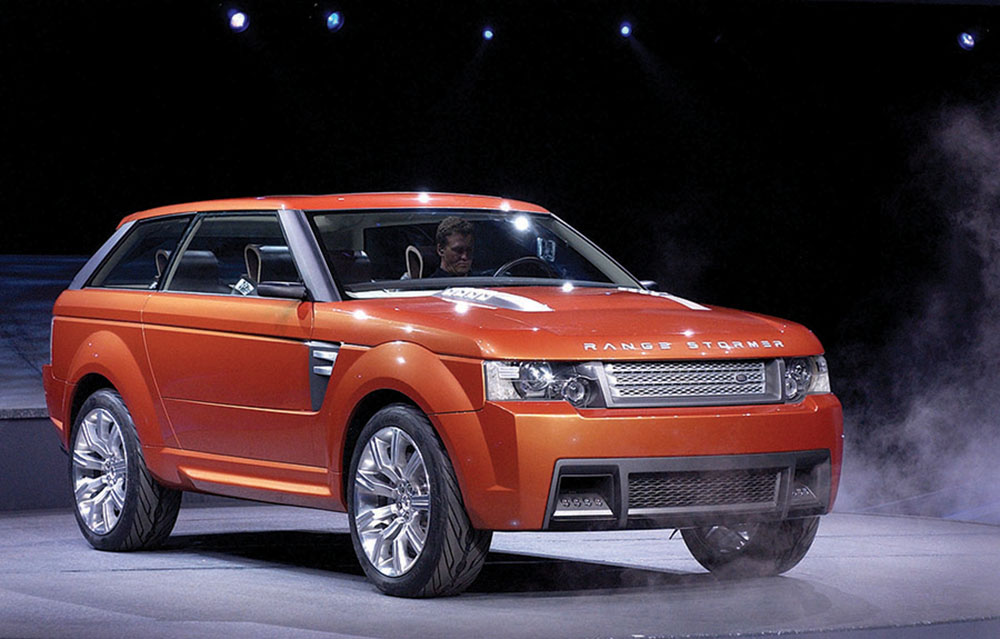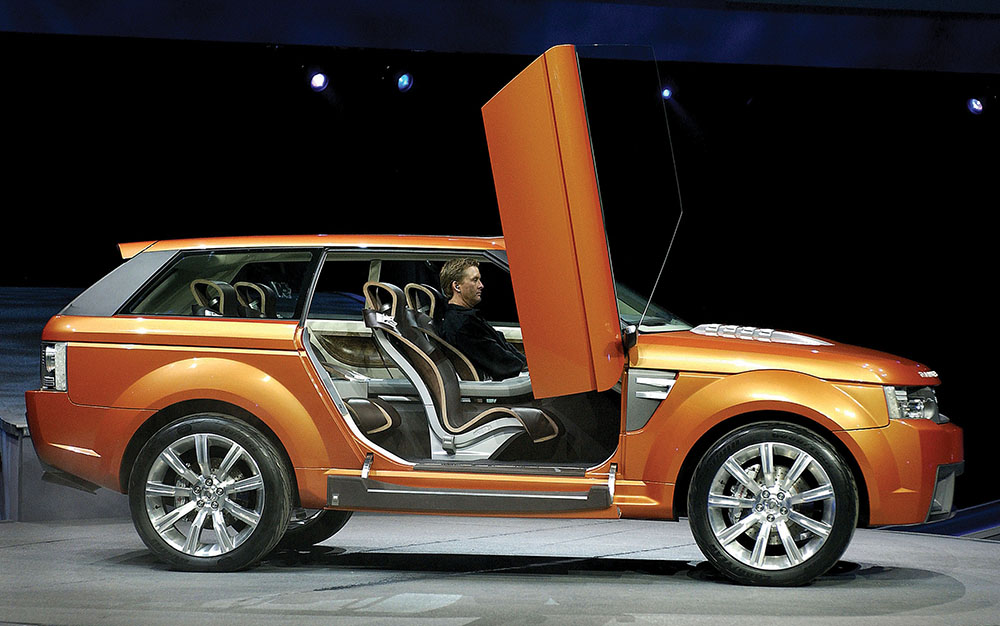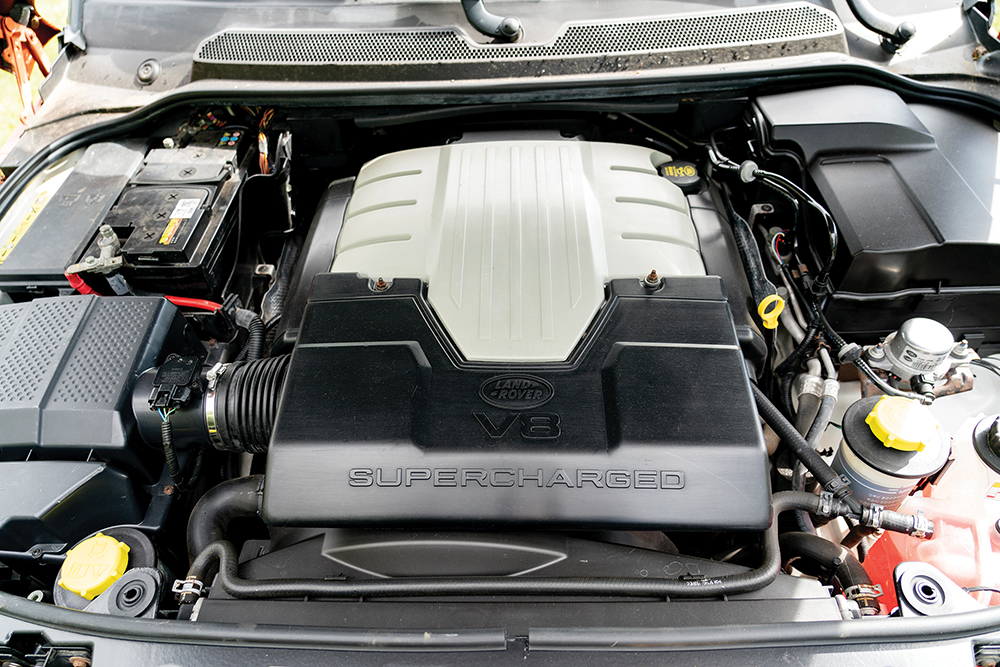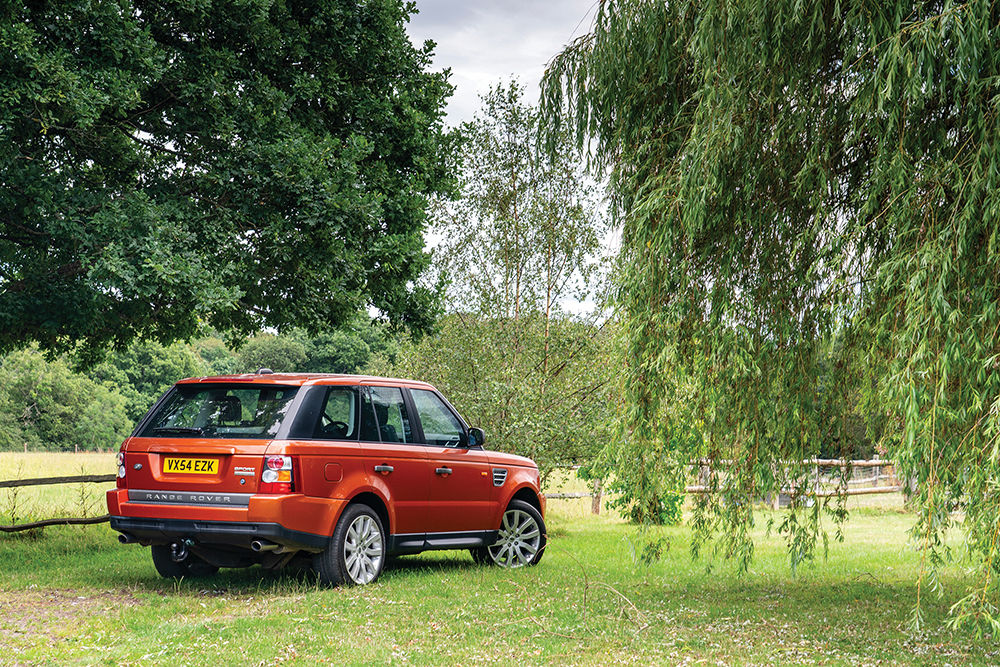30 November 2023
|
The Range Rover Sport has been one of JLR’s best sellers since it was launched in 2005, when the car you see here took centre stage at the Detroit Motor Show…
In JLR’s new ‘House of Brands’, the Range Rover is at the top of the pile. It is the company’s flagship vehicle and has been since the model was launched to the world in 1970. Nowadays, of course, the brand is a family of four vehicles, although in my view JLR still has some branding confusion to sort out.
At the pinnacle is the Range Rover Range Rover, which is obviously where the branding is still a little bit flaky, and the lack of a sensible name is probably why the vehicle is commonly (and not very flatteringly) referred to as the ‘full-fat Range Rover’ as a way of differentiating it from the lesser models in the Range Rover family. Below it, we have the Range Rover Sport, the Range Rover Velar, and the Range Rover Evoque.

The Sport's impressive styling still feels modern today
The Vogue name was associated with the Range Rover for many years, and I’ve always thought it would be perfect for the top-of-the-range model, but allegedly the magazine whose title it was borrowed from had a few words to say about that, so for now the full-fat model remains the Range Rover Range Rover. So good they named it twice, as Frank Sinatra used to sing…
It’s easy to forget that as recently as 2005 there was only one Range Rover model, but in that year we were introduced to the Range Rover Sport. Cheaper than its bigger brother, I can remember the mutterings at the time that it was ‘a poor man’s Range Rover’ that would ‘dilute the brand’. Both opinions proved to be wide of the mark, and the Sport has been one of the company’s top sellers ever since.
Although it was (and is) a more than capable 4x4, I’ve always seen it as the first time the company consciously placed on-road style and performance ahead of off-road capability, where the latter point was really a box-ticking exercise because no one really expected many of the buyers to take their Sport anywhere near serious off-roading.

The Range Stormer was the undoubted star of the 2004 Detroit Auto Show
The first hint of where things were going came in January 2004 at the North American International Auto Show in Detroit, when Land Rover presented its first-ever concept vehicle, the Range Stormer. It was a bold and futuristic design, created by Richard Woolley and his colleagues Sean Henstridge, Paul Hanstock, Mark Butler and Ayline Koning. Their design can still hold its head high today, and in many ways it reflected Land Rover’s growing confidence at a time of significant change within the company. It was very well received by the motoring press and the public alike.
The Range Stormer was designed and built in just eight months and, unlike many concept cars, it had a working engine: a rip-snorting supercharged V8. It had electrically operated two-part scissor doors, with the upper half hinging up and forwards, followed by the lower half dropping down to form a step into the cabin. Those doors were pure theatre and totally impractical but on show day, when they were opened amidst a billowing cloud of dry ice, they delivered the desired effect.

Range Stormer doors were very theatrical but unsurprisingly did not appear on the production Range Rover Sport
There were rear-facing cameras in the door mirrors, bonnet vents that gave a hint of hot-rod, and wheelarch contours that made it look lower and meaner than anything Land Rover had ever made before. An orange paint job certainly made it stand out, and the interior was very futuristic with minimalist, skeletal seats made of sculpted saddle leather, a screen mounted on the centre of the dash, a full-length sunroof, and fitted leather ‘his and hers’ bags neatly incorporated into the side walls. Another important engineering advance was also debuted, the now familiar Terrain Response with its rotary aluminium switch and six different terrain settings.
There was plenty of recognisable Range Rover DNA everywhere – a floating roof, the uninterrupted waistline, a clamshell bonnet with castellated corners, a split tailgate, and a short front overhang, to name just a few. Rather boringly, underneath there was a 4.6-litre P38A chassis, but it was obvious to any observer that this concept vehicle was meant to be a Range Rover.
And that was the point, because the intention was to test the public reaction to a smaller, sportier Range Rover. As Matthew Taylor, who was MD at the time, said at the Frankfurt Motor Show in late 2003: “It is the Range Rover, even more than the original Land Rover, that is now the inspiration for the company’s future.” Those words certainly ring true today, as JLR tries to position the Defender brand in the same way as Range Rover, while trying to get the Discovery brand to stand on its own feet. At the same time, the Land Rover title is being relegated to a supporting role as a ‘trust mark’.

Supercharged badge told you all you needed to know about the top-of-the-range Sport’s performance
The response to the Range Stormer was overwhelmingly positive, which was definitely very helpful, because development of the vehicle that would become the Range Rover Sport had begun as far back as 2000 and was within months of being ready to launch.
In fact, when the Range Stormer was unveiled in January 2004, the press release stated that it ‘previews a new production model, one that will enter a fresh market segment for the company and will be an additional model line in the Land Rover portfolio’. Matthew Taylor said: “The supercharged V8 Range Stormer gives a taste of our forthcoming new entrant in the booming high performance SUV segment. The production vehicle that follows will share many of its styling and technical innovations. It is very much conceived to be an on-road, high performance machine, as well as class-leading off-road like all Land Rovers.”
The new L320 Range Rover Sport was announced in November 2004 and dealers opened their order books immediately. Exactly one year after the Range Stormer had shown what the future looked like, and that it was orange, the new Range Rover Sport debuted at the Detroit Show in January 2005.

Chassis 900034 is the oldest surviving Range Rover Sport in the world
The vehicle you see here, chassis number SALLSAA345A900034, was on Land Rover’s stand at the launch in Detroit and is believed to be the oldest surviving Range Rover Sport in the world. It is a
pre-production vehicle that was actually completed before the Range Stormer was finished, and it was first registered on 1 November 2004. It appeared in all the Range Rover Sport promotional and marketing material at the time.
It started life as a Chawton White supercharged 4.2-litre V8 built to German market specification, and was upgraded and re-painted in Vesuvius Orange specifically for its role in the global launch of the L320. The vibrant orange paint job was initially available for customer order on the First Edition model, which was available for the 2005 Model Year only.

There is a very impressive 4.2-litre supercharged V8 under the uninspiring covers
The supercharged V8 model, with a top speed of 140mph and a 0-60mph time of just 7.2 seconds, was the most expensive Range Rover Sport option at £59,000 and it was undoubtedly the headline grabber, even though the vast majority of customers bought the more humble versions. The entry-level car was powered by a 2.7-litre TDV6 turbodiesel churning out just 190bhp, but this would become the best-seller across Europe, clearly meeting a market demand for a stylish, capable, ‘sportier’ SUV.

Refined and understated cabin was a comfortable place to watch the world pass by at 140mph
Land Rover had wanted to attract a new type of customer with its new fifth ‘nameplate’, and this is exactly what it achieved. Sales were nothing short of phenomenal: in the first six months alone, over 30,000 were sold globally, and in 2006 the Sport was the company’s best-seller by far, although there were the first signs of the company’s products competing with each other when it became clear that Discovery 3 sales were losing out to the Range Rover Sport. In 2007 the new Freelander 2 took the best-seller crown, but Sport sales remained strong, and have remained so to this day.
Needless to say, not everything from the Range Stormer concept was going to be found on the production Sport, not least because the final configuration for the Sport had been signed-off months before the Stormer began to take shape. There would never be any electrically-powered scissor doors, and the plan to make the Sport a two-door coupe had also fallen by the wayside early on, which is a shame. The final design of the interior was much more conventional as well, but the Stormer had served its purpose to excite interest and stimulate demand, even if there were grumblings in some quarters about the disparity between the excitement of the concept vehicle and the rather more staid production model.

Beautiful from every angle. Hardly a surprise that it quickly became the company’s best seller
When it was less than a year old, the company decided that the Detroit Motor Show Range Rover Sport was now superfluous to requirements, and it was delivered to the factory scrapyard pending disposal. Luckily it was saved, and eventually found its way into the Dunsfold Collection in December 2005 with negligible mileage on the clock, and nearly two years of warranty still to run. Initially it was used as a tow vehicle to take Collection vehicles to Land Rover shows around the country, and it proved to be exceptionally reliable. Even today, one year short of its 20th birthday, it has driven less than 25,000 miles.
It is a popular attraction at events and many people are drawn to it by the Vesuvius Orange paintwork, which suits the car perfectly and undoubtedly provides a visual link to the Range Stormer. The reality is that the vast majority of first-generation Sports were ordered in rather sober, conservative shades such as black, grey, silver, and dark blue and green, as buyers struggled to come to terms with the fact that a Range Rover could look cool in trendy, bright colours.
When the third-generation Range Rover Sport was launched on 10 May last year, JLR continued the red-orange theme with the launch vehicles, although this time the global reveal was on JLR’s YouTube channel rather than at a motor show.

Top Gear’s YouTube video is well worth watching
Earlier this year, Jason Barlow of Top Gear magazine interviewed JLR’s Chief Designer, Andy Wheel, to discuss the design and evolution of the new Range Rover Sport, and JLR wanted to be able to provide the complete line-up: Range Stormer, original Range Rover Sport, second-generation Sport, and the new vehicle, to show exactly how and why the vehicle had developed in the manner it had.

Range Stormer and all three generations of the Range Rover Sport came together at Ryton for Top Gear’s film
The Range Stormer usually sits on public display in the British Motor Museum at Gaydon, so that was relatively easily obtained, and JLR obviously had examples of the second- and third-generations to hand. What it didn’t have was an early example of the original Sport, so JLR hired the 2005 Detroit Motor Show star from the Dunsfold Collection. The resulting film, shot at JLR Classic’s Ryton facility, is available on YouTube and is fascinating to watch, offering an insight into the company’s current design ethos, and how ‘reimagined luxury’ translates into the way a vehicle looks, and the emotions and reactions it engenders from us.
The Range Rover Sport can be seen at The Dunsfold Collection Museum. Tickets available at dunsfoldcollection.co.uk.
Like to have your own Land Rover library?
Try our Budget Digital Subscription. You'll get access to over 7 years of Land Rover Monthly – that’s more than 100 issues plus the latest digital issue. All issues are fully searchable so you can easily find what you are looking for and what’s more it’s less than 10p a day to subscribe. Click here to find out more details and start enjoying all the benefits now.





